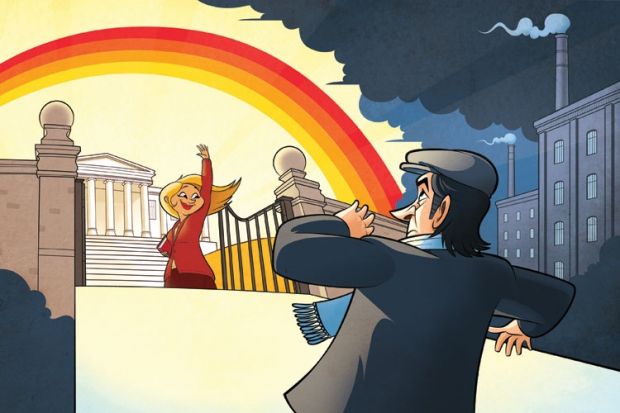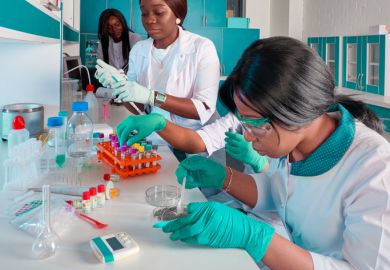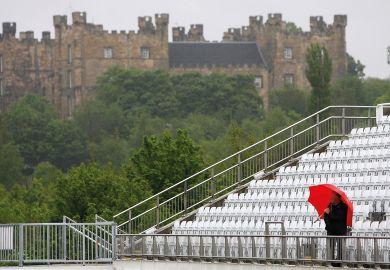Source: Ian Summers
Robbins drove a stake through the heart of the ‘more means worse’ argument (although it emerges regularly from its grave)
If you work in a university, you are bound to notice the attention being paid to an approaching anniversary – and it is one worth celebrating. This autumn marks 50 years since the publication of Lionel Robbins’ 1963 report, a document that clearly indicated higher education’s movement from the periphery to the centre of British national life.
At the time, UK student numbers had grown from 20,000 at the start of the 20th century to 118,000 – roughly the combined student populations of the cities of Manchester and Leeds today. Half a century on, higher education is firmly woven into the fabric of society and matters to everything from business to politics, from the media to international relations. Those precise barometers of national concerns, television and radio soaps, nearly always have a plotline involving a character at “uni” these days.
The 1963 report was also a marker of a wider modernisation, one of a number of developments signalling a break with the immediate post-war years. Philip Larkin, the University of Hull’s librarian at the time, later summed it up in Annus Mirabilis: “So life was never better than/In nineteen sixty-three (Though just too late for me)/Between the end of the Chatterley ban/And the Beatles’ first LP.” In politics, Harold Wilson’s 1964 general election campaign emphasised the difference between his meritocratic persona and that of his aristocratic political opponent Alec Douglas-Home, referred to at every opportunity as “the 14th Earl”. Wilson’s “white heat of technology” speech, made shortly before the Robbins report was published, pursued the optimistic, modernising theme; Robbins, by contrast, was rather less sanguine on this particular score, lamenting inadequate research funding from “public and private sources” and the need to strengthen university-industry links to ensure research was actually used. No change there, then.
Although the decisions about founding the 1960s universities had been made well before the report was published (the first, the University of Sussex, opened in 1961), it is significant that they are so often associated with it. They too marked new ways of thinking about higher education in curricular terms (Asa Briggs’ “new map of learning” at Sussex), in physical terms (leading architects designing bold campuses) and in terms of the modestly enlarged entries to higher education that followed their establishment. Higher education looked and felt different.
Meanwhile, parallel modernising changes were taking place in the schools system, overseen by two outstanding ministers: Edward Boyle, the Conservative minister of education from 1962 to 1964, and Anthony Crosland, the Labour secretary of state for education and science from 1965 to 1967. As Maurice Kogan notes in his book about the two men, The Politics of Education (1971), they directed the conceptual and operational transition from “the assumptions of pre-war education psychology [to those of] the post-war radical sociologists about the extent to which ability could be reliably predicted”. Crosland’s Circular 10/65, which “requested” (not a word favoured by secretaries of state these days) that local education authorities prepare plans to abolish selection in secondary education, was a result. The Robbins-validated expansion of higher education was another response to this dawning realisation (to quote Kogan again) “that access to the more favoured forms of education was differentiated according to social class” – not ability.
The Robbins report cleared the way for expansion by driving a stake through the heart of the “more means worse” argument (although, like the undead in a horror film, it nevertheless emerges regularly from its grave). Its research showed that entry to university largely depended not on ability but on class: 45 per cent of children whose father was in a “higher professional” occupation entered full-time higher education, compared with about 2 per cent from families where the father was a manual worker. Only an unusual genetic theory could link natural ability to your dad’s job. It was also pointed out that it was surely a happy accident that the size of the pre-expansion university system perfectly matched the amount of academic ability apparently to be found in the population. Dismissing such circular logic, Robbins concluded: “If there is to be talk of a pool of ability, it must be of a pool which surpasses the widow’s cruse in the Old Testament, in that when more is taken for higher education in one generation more will tend to be available in the next.”
Today’s sector would amaze Robbins in terms of its scale and scope, but its foundations were laid by the work of his committee and others pressing for social and educational change in the 1960s. We should use this anniversary to honour their work.
The IoE will mark the Robbins report’s 50th anniversary with a conference in London on 24 October. Times Higher Education is media partner for the event.
Register to continue
Why register?
- Registration is free and only takes a moment
- Once registered, you can read 3 articles a month
- Sign up for our newsletter
Subscribe
Or subscribe for unlimited access to:
- Unlimited access to news, views, insights & reviews
- Digital editions
- Digital access to THE’s university and college rankings analysis
Already registered or a current subscriber? Login




